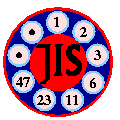 |
Journal of Integer Sequences |
 |
Journal of Integer Sequences |
The journal is devoted to papers dealing with integer sequences and closely related topics.
The kinds of papers we seek are typically as follows:
We do not read e-mail every day. If you do not receive an acknowledgment from us within fourteen days, then we have not received your paper. Please do not send any inquiries or resubmissions until at least 14 days have passed. In addition, during certain periods (e.g., start of school terms, August, late December to early January) there will likely be no processing of papers.
JIS is completely free for both authors and readers. There are no article processing charges, submission charges, or page charges. Members of the editorial board, including the editor-in-chief, receive no remuneration. The Journal is published with all-volunteer labor. If you have received an invoice to pay for publication, this is a scam! Do not pay it.
Therefore, publishing a paper in JIS requires a higher standard of manuscript preparation than many other journals, which have a large editorial staff to fix problems. We ask that you read our style guide with care and make a real effort to make your paper conform. This also means that if you are not a native English speaker, you will want to find a native English speaker to proofread your paper.
By submitting you agree to follow the guidelines in our LaTeX style guide in the final version of your paper:
If you cannot commit to doing, once your paper is accepted, the minimal work (generally 2-4 hours) required to read the style guide and ensure that your paper conforms, please do not submit.
Papers should be original, of high quality, and should not have been published in any other journal. (However, publication on web sites or e-print servers is explicitly allowed.) All submissions will be refereed. The standards are those of any serious mathematical journal. Papers should be worthy of being reviewed by Mathematical Reviews. Unlike a traditional journal, there are no page limits. Authors should feel free to include as much expository material as they like, provided it adds to the paper and makes it easier to understand. Feel free to submit accompanying documents and files, such as computer programs, Maple or Mathematica worksheets, tables, and so forth. All will be published and accompany your paper.
By publishing a paper in the Journal, authors grant the Journal a perpetual, royalty-free license to publish this paper in any collection of Journal papers in any form. Authors retain the copyright of their submitted papers. Authors may, of course, submit their paper to the Arxiv or any other preprint archive, at any time.
Perhaps in the future, if they reform themselves, we'll join. The DOAJ is, in principle, a good idea.

Google search for the Journal:

Backlog information for Volume 26, 2023, as submitted to the AMS:
Median time from submission to final decision: 118 days
Median time from final acceptance to publication: 4 days
These are median times only and are not guarantees.
